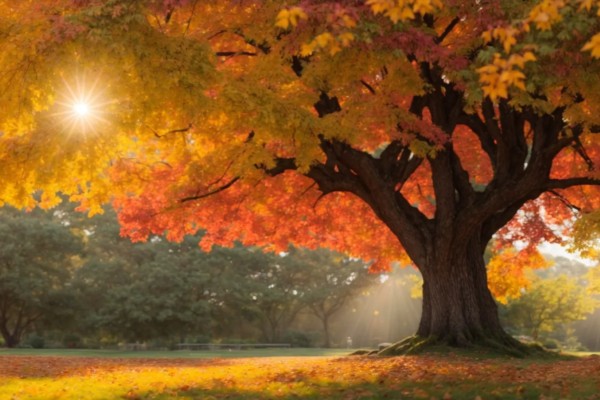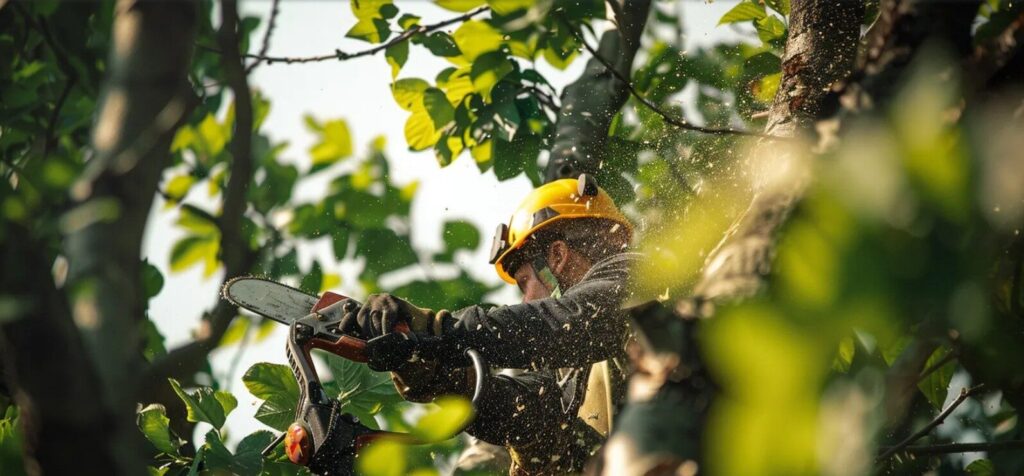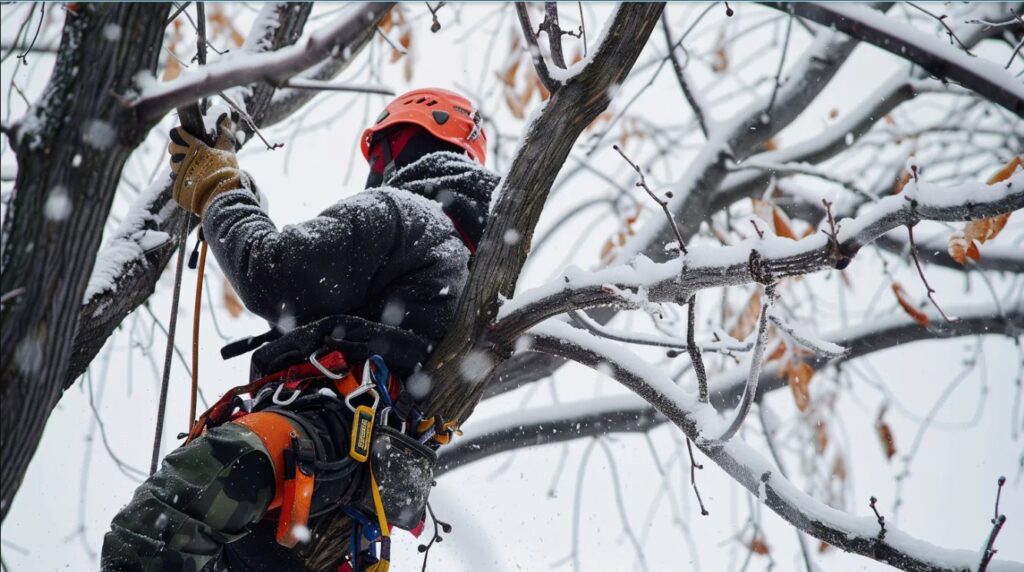
Maximize Tree Health with Seasonal Check-ups
Are your trees thriving or merely surviving? Regular seasonal checkups are crucial for maintaining healthy, vibrant trees. This guide will cover essential tree healthassessments for each season, focusing on spring growth, summerheat stress, fall preparation, and winter care. You’ll learn how to recognize signs of tree distress and when to seek professional tree careservices. By following our tree carecalendar and utilizing experttips, you’ll ensure your trees remain strong, beautiful, and disease-free year-round.
Understanding the Importance of Seasonal Tree HealthCheckups
Regular tree healthcheckups are essential for maintaining a vibrant lawnand ensuring the longevity of your trees. By conducting seasonal inspections, you can identify potential issues early and provide appropriate tree carebefore problems escalate.
During these checkups, examine the trunkfor signs of damage or disease. Look for cracks, unusual growths, or discoloration that may indicate stress. Early detection allows for prompt treatment, preventing further harm to your trees.
By prioritizing seasonal tree healthcheckups, you’re investing in the long-term well-being of your trees. This proactive approach to tree carehelps maintain a beautiful, healthy lawnwhile reducing the riskof tree-related issues in the future.
Spring Checkups for Maximum Growth and Vitality
Spring checkups are crucial for your trees’ health and growth. We’ll assess winter damage, including mildewand stormimpacts, to identify potential hazards. We can examine new growth patterns and development needs, especially in evergreens.
Assessing Tree Damage From Winter Conditions
As spring arrives, you should carefully assess your trees for winter damage. Examine branches for signs of frostdamage, such as cracks or discoloration, which may require pruningto prevent further issues. CJ TreeServicerecommends inspecting the soilaround your trees for compaction or erosion caused by winter conditions, as these factors can impact tree healthand growth.
Check for any pestinfestations that may have occurred during the dormant season, as addressing these early can prevent extensive damage. Consider applying appropriate pesticides if necessary, but always consult with a professional treemaintenanceservice for proper application techniques. By conducting thorough spring assessments, you can ensure your trees receive the care they need to thrive throughout the growing season.
Identifying New Growth and Development Needs
As trees emerge from dormancy, you need to identify new growth patterns and development needs. Examine your trees for budbreak and leafdevelopment, noting any irregular or sparse growth that may indicate underlying issues. Assess the overall shape and structure of your trees, determining if pruningis necessary to promote healthy growth and maintain an attractive landscape.
Pay close attentionto signs of fungusor diseaseon new growth, as these can quickly spread and compromise tree health. Evaluate the color and size of new leaves, ensuring they appear vibrant and appropriately sized for the species. If you notice any abnormalities, consult a professional arboristto diagnose and address potential problems before they escalate.
SummerHealth Checkups to Combat Heat Stress
During summer, your trees face heat stresschallenges. Conduct regular checkups to monitor water needs, detect pestinfestations, and assess leafhealth. These inspections help maintain a healthy ecosystemand determine if tree trimmingor removal is necessary. Proper care during hot months prevents issues that could lead to tree stumpproblems later.
Detecting and Treating PestInfestations
You should regularly inspect your trees for signs of pestinfestations during summerhealth checkups. Look for unusual leafdiscoloration, holes in the bark, or visible insects on branches. Pay special attentionto elms, as they’re susceptible to certain pests in warm weather. Early detection allows for prompt tree health caremeasures before autumnarrives.
If you identify a pestproblem, consult a professional arboristfor appropriate treatment options. We may recommend targeted pesticides or natural remedies, depending on the infestationseverity and tree species. Proper mulching can help deter some ground-dwelling pests and retain moisture, benefiting overall tree healtheven as you prepare for potential snowin colder months.
Assessing LeafHealth and Overall Canopy
During summerhealth checkups, assess leafhealth and canopystructure to identify potential issues. Examine leaves for discoloration, wilting, or abnormal growth patterns that might indicate heat stressor soilmoistureproblems. Evaluate the overall canopydensity and shape, looking for any stormdamage or signs of infestationthat could compromise tree health.
You should also inspect the tree’s branches for proper distribution and balance within the canopy. A well-maintained canopyhelps trees withstand summerheat and reduces the riskof branch failure during storms. If you notice any concerning issues, consult a professional treeserviceto address potential problems and maintain the health of your trees and shrubs.
Fall Checkups for Winter Preparation
Fall checkups prepare your trees for winter dormancy. Evaluate tree structure and stability to prevent damage from winter storms. Apply mulchand fertilizerto support root health during dormancy. Inspect for pests like barkbeetles before hibernation. These steps, along with proper irrigationand tree careservices, ensure your trees withstand droughtand harsh conditions, promoting successful spring growth.
Evaluating Tree Structure and Stability
You should evaluate your trees’ structure and stability during fall checkups to prepare for winter. Inspect each speciesfor weak or damaged branches that could break under snowor ice load, compromising the canopy‘s beautyand integrity. Check for signs of soilcompactionaround the root zone, which can affect the tree’s overall stability.
Examine the tree’s woodquality, looking for decay or hollows that might weaken its structure. Assess the canopyfor proper balance and symmetry, as an uneven distribution of weight can increase the riskof failure during winter storms. If you notice any structural issues, consider consulting a professional arboristfor expertguidance on necessary pruningor support measures.
Inspecting for Pests Before Hibernation
You should inspect your trees for pests before winter hibernation to protect your urban forest. Focus on examining bark, leaves, and branches for signs of beetleinfestations or other harmful insects. Pay attentionto fruit trees, as they often attract pests that can overwinter and cause damage in spring.
Consider the impact of climateand soilpHon pestpopulations in your area. Conduct a thorough inspection, looking for bore holes, sawdust-like frass, or egg masses on tree surfaces. If you detect any issues, consult a professional arboristto develop a treatment plan that addresses pestconcerns while maintaining overall tree health.
Winter Assessments for Long-Term Health
Winter assessments are crucial for your trees’ long-term health. Focus on pruningtechniques to maintain structural integrity and detect winter damage or stresssigns. Plan for the upcoming growing seasonby considering integrated pestmanagementstrategies. Pay attentionto oakwiltprevention and potential constructionimpacts. Consult a certified arboristfor expertguidance on these essential winter tree caretasks.
Planning for the Upcoming Growing Season
Consider consulting an expertarboristto develop a comprehensive care plan tailored to your specific tree speciesand local climateconditions. Their expertise can help you address potential issues before they escalate, ultimately leading to improved tree healthand increased customer satisfaction. By planning ahead, you’ll be well-prepared to provide optimal care for your trees throughout the growing season.
Recognizing Signs of Tree Distress Year-Round
Recognizing tree distress year-round is crucial for maintaining a healthy habitatand reducing riskto your property. Learn to identify common health indicators and distinguish between seasonal changes and long-term problems. By understanding these signs, from buddevelopment to harvesttime, you’ll better protect your trees and support local agriculture.
The Role of Professional Arborists in Seasonal Checkups
Professional arborists play a crucial role in seasonal tree healthcheckups. You’ll learn when to seek experthelp, what services certified arborists offer, and the benefits of regular professional monitoring. These specialists can identify issues like harmful organisms, remove debris, and provide essential care for your trees’ long-term health.
When to Seek Help From Experts
You should seek experthelp when you notice persistent issues like unusual leafdiscoloration, significant branch dieback, or signs of pestinfestationthat don’t resolve with basic care. Professional arborists can accurately diagnose complex problems and provide targeted treatments that you might not be equipped to handle on your own.
Consider consulting an expertif you’re planning major landscapechanges or constructionnear your trees. Arborists can assess potential impacts on root systems and tree health, helping you make informed decisions to protect your valuable trees. Their expertise is also crucial for addressing stormdamage or when you need specialized pruningfor mature or structurally compromised trees.
Developing a Tree CareCalendar
Developing a tree carecalendar helps you maintain healthy trees year-round. Schedule seasonal checkups to address specific needs during each growth phase. Keep detailed records of observations and treatments to track your trees’ progress and identify recurring issues. This organized approach ensures timely care and promotes long-term tree health.
Scheduling Seasonal Checkups
You should schedule seasonal checkups for your trees at key points throughout the year. Plan for spring inspections to assess winter damage and prepare for new growth, summerchecks to monitor heat stressand water needs, fall evaluations for winter preparation, and winter assessments for structural pruningand dormancycare.
Create a detailed calendar that aligns with your local climateand tree species‘ specific needs. Include reminders for tasks like soiltesting, fertilization, and pestcontroltreatments. By following a structured schedule, you’ll ensure your trees receive timely care and maintain optimal health throughout the year.
Frequently Asked Questions About Tree HealthCheckups
You’ll find answers to common questions about tree healthcheckups in this section. Learn how often to inspect your trees, identify prevalent tree diseases, and determine if you can perform checkups yourself. These insights will help you maintain healthy trees and know when to seek professional assistance.
How Often Should I Check My Trees?
You should conduct thorough tree healthcheckups at least four times a year, aligning with each season’s unique challenges. Perform spring inspections to assess winter damage and prepare for new growth, summerchecks to monitor heat stressand water needs, fall evaluations for winter preparation, and winter assessments for structural pruningand dormancycare.
In addition to these seasonal checkups, you should visually inspect your trees after severe weather events or if you notice any sudden changes in appearance. Regular observations throughout the year will help you detect early signs of stress, disease, or pestinfestations, allowing for prompt intervention and maintaining optimal tree health.
What Are the Most Common Tree Diseases?
You should be aware of several common tree diseases that can affect your landscape. These include oakwilt, which primarily impacts oakspecies, Dutch elmdiseaseaffecting elmtrees, and fire blight, which commonly strikes fruit trees and related ornamentals. Recognizing symptoms like leafdiscoloration, wilting, or cankers on branches can help you identify these issues early.
Other prevalent tree diseases you might encounter include anthracnose, affecting a wide range of deciduoustrees, and various types of root rot caused by fungal pathogens. Regular inspections during your seasonal checkups will help you spot signs of these diseases, such as unusual leafspots, premature leafdrop, or decay at the base of the trunk. Early detection allows for prompt treatment and better chances of preserving your trees’ health.
How often should I perform health checkups on my trees?
Regular tree healthcheckups should be performed annually, ideally in late winter or early spring. However, inspect trees more frequently after severe weather events or if you notice any signs of diseaseor pestinfestation. Consistent monitoring helps maintain tree healthand prevents potential hazards.
What are the key signs of tree distress to look for?
Key signs of tree distress include wilting or discolored leaves, premature leafdrop, dead branches, barkdamage, fungal growth, pestinfestations, and unusual growth patterns. Root exposure, leaning trunks, and cracks in the soilaround the base also indicate potential problems.
Why are seasonal tree healthcheckups important for long-term tree care?
Seasonal tree healthcheckups are crucial for early detection of diseases, pests, and structural issues. These regular assessments allow arborists to address problems promptly, maintain optimal growth conditions, and implement preventive measures, ensuring the long-term health and longevity of trees in various environments.
When is the best time to prepare trees for winter?
The best time to prepare trees for winter is in late fall, before the first frost. Prunedead branches, mulcharound the base, wrap young trees, and water deeply. These steps protect against cold damage, promote healthy growth, and ensure trees survive harsh winter conditions.
How can professional arborists help with seasonal tree checkups?
Professional arborists offer expertseasonal tree checkups, assessing overall health, identifying potential issues, and recommending appropriate care. They inspect for pests, diseases, structural problems, and pruningneeds, ensuring trees remain healthy and safe throughout the year. Regular professional evaluations help maintain tree longevity and property value.


